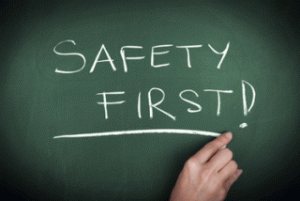Know These Signs of a Possible Gas Leak in Your Building

Building owners and commercial facility managers have many responsibilities, but perhaps the most important is to be ready to respond to an emergency. A gas leak presents an immediate threat to life and property and requires an immediate response from those in charge of the building and any personnel or customers inside it. The following information will help you understand the signs of a gas leak inside your building and what to do if you’re faced with the possibility of a gas leak.
The Dangers of Gas Leaks
Natural gas is very common and widely used in both residential and commercial applications. It is used as fuel for heating systems such as furnaces and boilers. Gas is also frequently used for water heaters and for stoves, ovens, and other cooking equipment.
The most probable danger posed by a gas leak is that of a fire or explosion. Natural gas is highly flammable, so even a small spark or tiny flame could be enough to cause the gas to ignite. A flash fire that causes damage or injury could be one of the least harmful effects. If there is enough gas present in a high enough concentration, an explosion violent enough to destroy a building and cause multiple deaths could occur. A gas leak should be seen as an emergency situation requiring immediate response.
Signs of a Gas Leak
The pipelines and equipment used to transport gas from the main utility supply lines to the inside of a home or commercial facility are very sturdy and extremely safe. On rare occasions, however, gas leaks can occur. Gas leaks can be detected by:
- Smell: Natural gas is odorless and difficult to detect, so gas companies routinely add a substance that gives the gas a distinct smell similar to rotten eggs. This type of smell should be reported immediately.
- Sight: Visibly damaged or broken pipes, fittings, or transmission equipment can be a certain sign of a gas leak. Gas in pipes is under pressure, so a leak in an underground pipe can produce blowing dirt or bubbles in pools of water. Underground gas line leaks can also kill vegetation in the vicinity of the leak, so look for dead or discolored grass, shrubs, or other plants.
- Sound: A leaking gas line will often create a hissing or blowing sound as gas escapes. Larger leaks can produce a loud roaring sound from the gas line.
Responding to a Gas Leak
If a gas leak is suspected, immediate action must be taken.
- Extinguish any flames at once. Shut off equipment that produces flames, such as stoves or welding equipment. Stop operating any devices that could create a spark. Do not make phone calls, turn on lights, or activate any other devices that could make a spark or flame.
- If possible, shut off the main gas lines coming into the building. Do not, however, take the time to do this if mean increased risk to the person shutting off the gas.
- Evacuate the building. Ensure that all personnel immediately leave the building and gather in a safe place a reasonable distance from the structure. Gas explosions can be strong enough to level buildings, so employees or customers should put plenty of distance between themselves and the structure.
- Call the gas company and emergency personnel. Notify the local fire department of the suspected gas leak. Call the gas utility company and tell them you have a suspected leak. Wait for assistance and do not go back into the building until the situation has been checked out and the “all clear” is given.
Our goal is to help educate our customers about Plumbing, HVACR, Fire Protection, and Alarm Systems in Mechanical, Commercial, and Residential settings. For more information on how to recognize a gas leak in your facility and what to do if a leak occurs, or to view projects we’ve worked on, visit our website!
Credit/Copyright Attribution: “Aysezgicmeli/Shutterstock”







